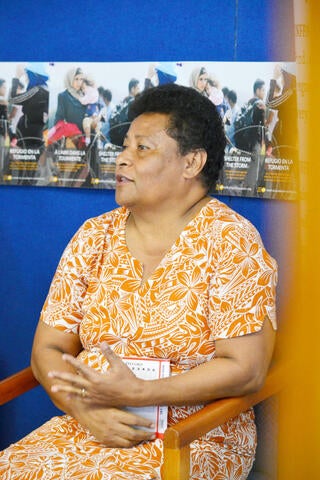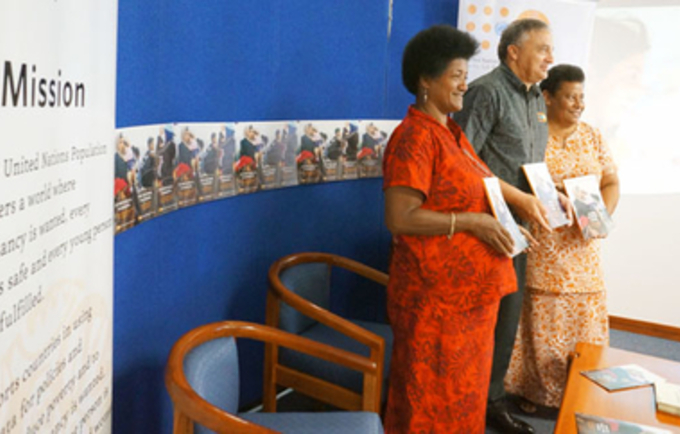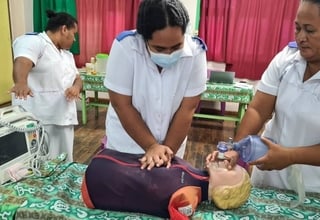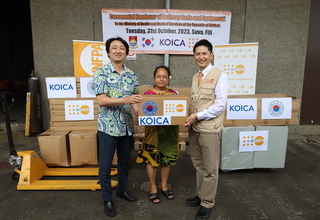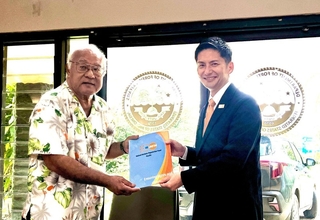In 2014, the United Nations responded to 60 disasters and seven complex emergencies or conflicts, perhaps a reflection of how between 2013 and 2014, 78 countries were considered to have "become less peaceful".
By 2015, 100 million people have been recorded to be in need of humanitarian assistance, about 26 million of who are women and adolescents in their childbearing years - and every day, 507 women die from complications of pregnancy and childbirth in fragile states.
The State of World Population (SWOP) 2015 titled Shelter from the Storm: A transformative Agenda for Women and Girls in a Crisis Prone World, the flagship publication of the United Nations Population Fund (UNFPA) released annually with different themes is a timely reminder of the importance of investing in mitigation and resilience, meeting all acute needs including sexual and reproductive health services and inclusivity in preparedness.
The likelihood of being displaced by a disaster today is 60 per cent higher than it was four decades ago. Women and girls bear extraordinary burdens in the aftermath of natural disasters and/or conflicts. They are usually in the frontline but rarely are their basic needs for family planning, reproductive health care and safe childbirth met.
Without the usual protection of family and community, women and adolescent girls frequently become victims of sexual violence. Reproductive health services saves lives.
No one should be left behind as we prepare for the onslaught of climate change-induced storms the Pacific region can expect. Equitable development plans and inclusive national mitigation and adaptation preparation are fundamental.
The devil is in the detail. If details are provided for in national plans, it saves precious time as clear pathways prevents delays in response, from coordination level in most cases are the national disaster management teams, down to evacuation centre management. The UNFPA usually pre-positions immediate response items like dignity kits, specifically prepared for women, within countries. If its distribution was considered a priority, assessment teams could already be taking these out with them.
A fundamental shift of attitude and expectation to and of what evacuation centres are or should be is also needed. However long people need to stay, they have to exist in dignity, particularly women and adolescent girls. A gender-sensitive and reproductive health services-considerate evacuation centre plan would, for example, collate desegregated data as soon as it is possible so the response is targeted - knowing how many pregnant women or teenage girls are in an evacuation centres for example informs response.
Ensuring toilets and bathrooms for men and women are in separate buildings for example may prevent oft-recounted stories of women and adolescent girls having to walk through throngs of men and young boys who loiter outside these facilities, mischievously regaling them with embarrassing catcalls or statements with sexual connotations. Addressing the detail can prevent sexual assaults, unplanned pregnancy, the spread of sexually-transmitted infections, childbirth complications which can be fatal, and the list goes on.
We have a number of regional commitments which provide for appropriate preparedness, the most recent one being Kaila! - Pacific Voice for Action on Agenda 2030 - Strengthening Climate Change Resilience through Women's, Children's and Adolescent Health. Resilience needs to be strengthened for individuals, governments, institutions and communities best achieved through inclusive and equitable development.
The SWOP 2015 report calls on governments to move women's health and rights, and in particular women's sexual and reproductive health, from the back to the front seat of the world's humanitarian agenda.
The report calls for better shelter to help women and adolescent girls weather the storms of disasters and conflicts all around us today. Critical basic services like maternal health and contraception are necessary to save women's lives. Good sexual and reproductive health information and services, and lived reproductive rights will enable adolescents to make a safe and healthy transition to adulthood, with their rights and dignity intact.
The SWOP 2015 report calls for four transformative agenda for humanitarian assistance:
* We must meet all acute need. Access to sexual and reproductive health services can save lives. This service can no longer be an afterthought;
* Increase investment in mitigation ensuring prevention and preparedness for future crises;
* Invest in resilience, fundamental for resilience of governments, institutions, communities and individuals is inclusive and equitable development; and
* Bridging the gap between humanitarian assistance and development.
"Humanitarian responses, if implemented in a way that promotes gender equality and meets everyone's needs, including the sexual and reproductive health needs of women and adolescent girls, can lay the foundation for rapid recovery and post-conflict, resilient development," Dr Laurent Zessler, UNFPA Pacific director and representative said.
Before Cyclone Pam, a Category 5 tropical cyclone, made landfall in March this year, Apisai Tokon of the Government of Vanuatu's Public Health Unit said there were existing gaps related to reproductive health services, including human resource constraints; the cyclone aggravated the situation for the Vanuatu Ministry of Health.
"The evacuation centres were overflowing with people needing services but there were not enough essentials for basic hygiene like bath towels or mattresses for pregnant women just to be comfortable," Ms Tokon said.
Apart from being heavily involved in the gender cluster, the UNFPA responded to a specific request from the Government of Vanuatu for midwives. As it was, the Vila Central Hospital which was the main national referral centre only had six midwives at the most.
One of the 18 retired midwives who went to Vanuatu - two missions of nine midwives serving a month each - is Karolina Tamani, now working within the Family Health Unit of the Ministry of Health and Medical Services.
"We shared knowledge, we shared experiences and we identified and found solutions together," Ms Tamani said, adding while there were a lot of differences in the way Fiji and Vanuatu nurses worked, they eventually found common grounds.
"I would recommend it, a lot of nurses are retiring still fresh, healthy and strong and could be utilised in these fields, to go and provide support. Look at them for training or capacity-building for both midwives and basic nurses, you can utilise some of them as resource persons."
For the State of World Population Report 2015, (entitled: Shelter from the storm: A transformative agenda for women and girls in a crisis-prone world) please click here.
For a brief in detail of how UNFPA responded to Cyclone Pam (entitled Vanuatu Cyclone Pam Response) please click here.
